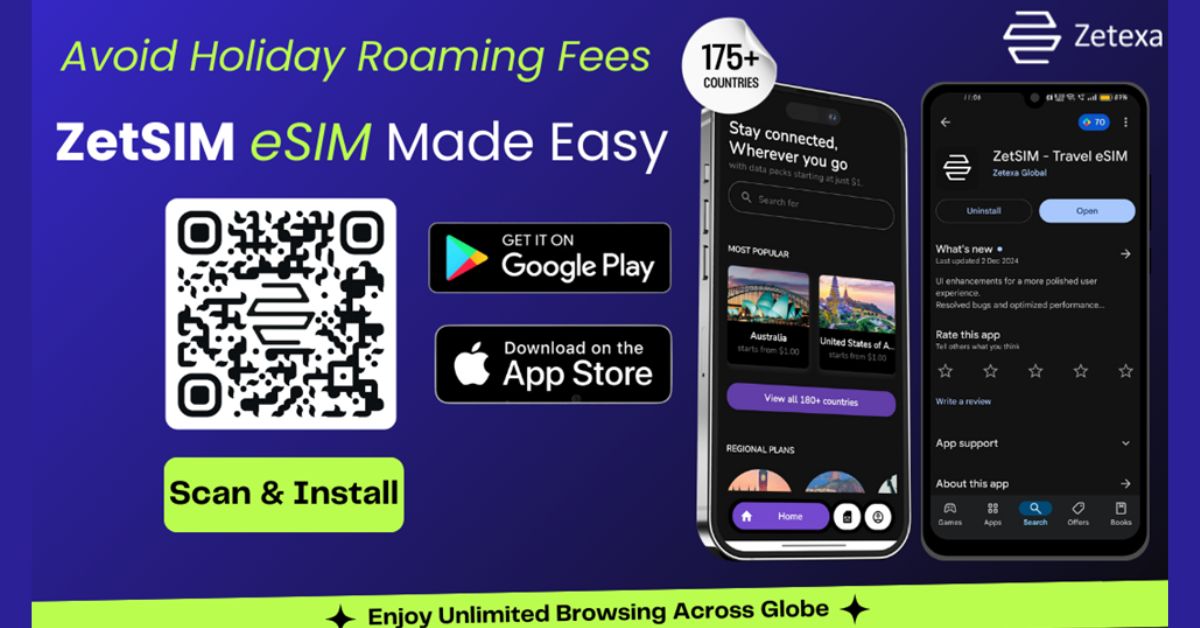With the way technology seems to influence every part of our life these days, it is about to give a facelift to something like travel insurance with the aid of a tiny yet powerful invention: travel eSIM. Picture this: You are busy packing and making last-minute arrangements for an amazing transcontinental trip when suddenly the thought hits you that your travel insurance probably needs some serious upgrading. In comes the eSIM: sleek, digital, and rewriting connectivity, and by doing so, how we protect our adventures.
One will no longer fiddle with physical SIM cards and endless paperwork. Instead of all these traditional SIM cards comes the eSIM—an embedded, small chip offering great flexibility and ease of use. This little dynamo is going to squeeze the travel insurance process from static, often unwieldy, to dynamic and seamless. Imagine a world where you can access your policy, all its updates, and any kind of help from wherever you are—no frustrations of switching physical cards or dealing with clunky systems.
As we explore this exciting new world where digital and physical are seamlessly combined, we’ll look at how eSIM technology is changing not just how connected we are but also how we safeguard and organize our journeys. Fasten your seatbelts and get ready to see how this breakthrough is reshaping travel insurance to be as flexible and adaptive as the travels it is meant to safeguard.

The New Era of Travel Insurance
Obtaining travel insurance used to be a highly complicated process involving stacks of documents, endless rules, and insurance companies. The complications multiply when traveling abroad, as different places have different insurance policies and sometimes even differing conditions of coverage within countries. Let me introduce you to eSIM technology, which is really a digital revolution that can alleviate much of the complexity and rigors associated with travel insurance.
An embedded SIM, commonly referred to as eSIM, is a highly advanced digital alternative to physical SIM cards used in mobile handsets. Unlike regular SIM cards, eSIMs don’t use a physical SIM card, as they are embedded directly into the motherboard of a device. Certainly very flexible and convenient, this technology can be, especially in the case of travelers who move about frequently.
According to a report from Market Research Future, the global eSIM market is projected to grow by an 18% CAGR during the period from 2021 to 2026, reaching up to $30 billion. This growth was driven by application industries such as tourism and insurance that have been adopting this eSIM technology. Moreover, the real-time updating and connectivity of technology make it still more relevant in a sector of international travel insurance where timely communication and accessibility of services become prime factors.
Linking Worlds: eSIM Enhances Connectivity Like Never Before
Be it emergency support, claim processing, or staying in touch, connectivity is the essence of travel insurance. With changing technology, eSIM now allows travelers to stay connected across borders without switching SIMs. Since accidents or other undesirable events can happen at any time, such constant connectivity would help passengers to contact emergency services or their insurance company.
The challenge of most conventional travel insurance policies is the requirement for a traveler to carry many documents or login to various portals for policy management. With eSIM connectivity, this will be easier because all such insurance details can simply be integrated into mobile apps. Travelers will be able to get insurance information, file claims, or get assistance using their devices; there will not be any need to carry physical paper.

Dynamic Coverage Options
One of the major benefits associated with the eSIM technology is its flexibility in switching between a wide array of network service providers. This flexibility can be replicated on products for travel insurance through dynamic coverage based on where one is or the current needs of the traveler. For example, fintech companies can be at the very forefront in developing travel insurance products that have the ability to adjust automatically to regions, giving different solutions that change according to changing circumstances.
Tomorrow’s Travel – eSIM Will Rewrite Insurance for the Modern Voyager
This might even go so far as to include artificial intelligence and eSIM technologies. For instance, AI will suggest customized travel insurance or any other emergency aid required, taking into consideration the traveler’s location and conditions, utilizing the data sub-sets provided by eSIMs.
Blockchain technology can, however, enhance the level of security and transparency in transactions for travel insurance. Incorporating blockchain technology with eSIM connectivity would create immutable records of insurance claims and transactions for fintech companies. This will mitigate fraud and increase trust in the insurance process.
As eSIM technology begins to spread across the world, this will enable any collaborative effort by fintech companies in tailoring standardized travel insurance solutions to ensure there is consistent coverage and benefits across various regions. This makes the insurance process much easier for international travelers and delivers a seamless experience in most respects.

Conclusion
Embedding eSIM technology into travel insurance would basically be a step closer to making an experience more connected, effective, and user-friendly. It unlocks the potential of eSIM solutions that place fintech companies in a better position and set the tone in seamless connectivity to streamline services that passengers highly demand.
Travel insurers can be in a leading position to manage changes in both the travel and insurance industries by making eSIM technology at the heart of the improvement of their service offerings. Obvious benefits include enhanced security, real-time administration, superior connectivity options, and a much more efficient process for claims handling. The entire process will be much smoother and trustworthy for travelers, leaving them free to enjoy their travels rather than hassling with logistics.
In the face of a primarily connected world, eSIM technology is on the verge of disrupting how the travel insurance sector does business with greater agility, security, and efficiency. The future is here, and it’s connected—thanks to the power of eSIM.
CLICK HERE FOR MORE BLOG POSTS











